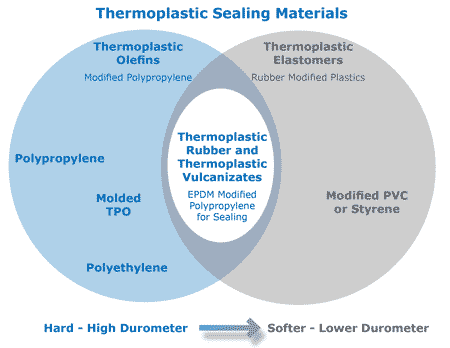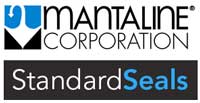Thermoplastic Elastomers
 Thermoplastic elastomers (TPE) or thermoplastic rubbers are copolymers of a plastic and a rubber. The properties of thermoplastic elastomers reflect the properties of both thermoplastics and elastomers.
Thermoplastic elastomers (TPE) or thermoplastic rubbers are copolymers of a plastic and a rubber. The properties of thermoplastic elastomers reflect the properties of both thermoplastics and elastomers.
There are many commercially available products of TPE elastomeric alloys: Dryflex, Mediprene (Hexpol), Santoprene (ExxonMobile), Geolast (Monsanto), Sarlink (DSM) and Alcryn (Du Pont).
Potential to be recyclable, easily colored and good batch-to-batch consistency
Thermoplastic elastomers allow for improved consistently in both the raw materials and the finished product because thermoplastic elastomers need little or no compounding and no additional reinforcing agents, stabilizers or cure processes. Therefore, every batch requires the same weight of the same components; thermoplastic elastomers consume less energy and the product quality is easier and more economical to control.
Thermoplastic elastomers accept most dye types readily.
The plastic component of a thermoplastic elastomer product is reusable and recyclable; the rubber component is not because of its thermoset properties. New technologies are opening up the ability to recycle thermoplastic elastomers.

Disadvantages include high cost of raw materials, poor chemical and heat resistance.
The disadvantages of thermoplastic elastomers relative to conventional rubber are the relatively high cost of raw materials, general inability to load them with low cost fillers such as carbon black, poor chemical and heat resistance, high compression set and low thermal stability.
Used for automotive suspension bushings and interior trim application, electrical cable jacket/inner insulation material.
Thermoplastic elastomers are widely used in a variety of automotive and household appliance sector applications. Thermoplastic elastomers are commonly used to make suspension bushings for automotive performance applications because of their greater resistance to deformation when compared to regular rubber bushings. Thermoplastic elastomers are also finding more and more uses as electrical cable jacket/inner insulation material. Interior trim applications have largely devolved to thermoplastic elastomers versus the use of more conventional rubbers.



